Narsai of Nisibis
Scroll for quotes→

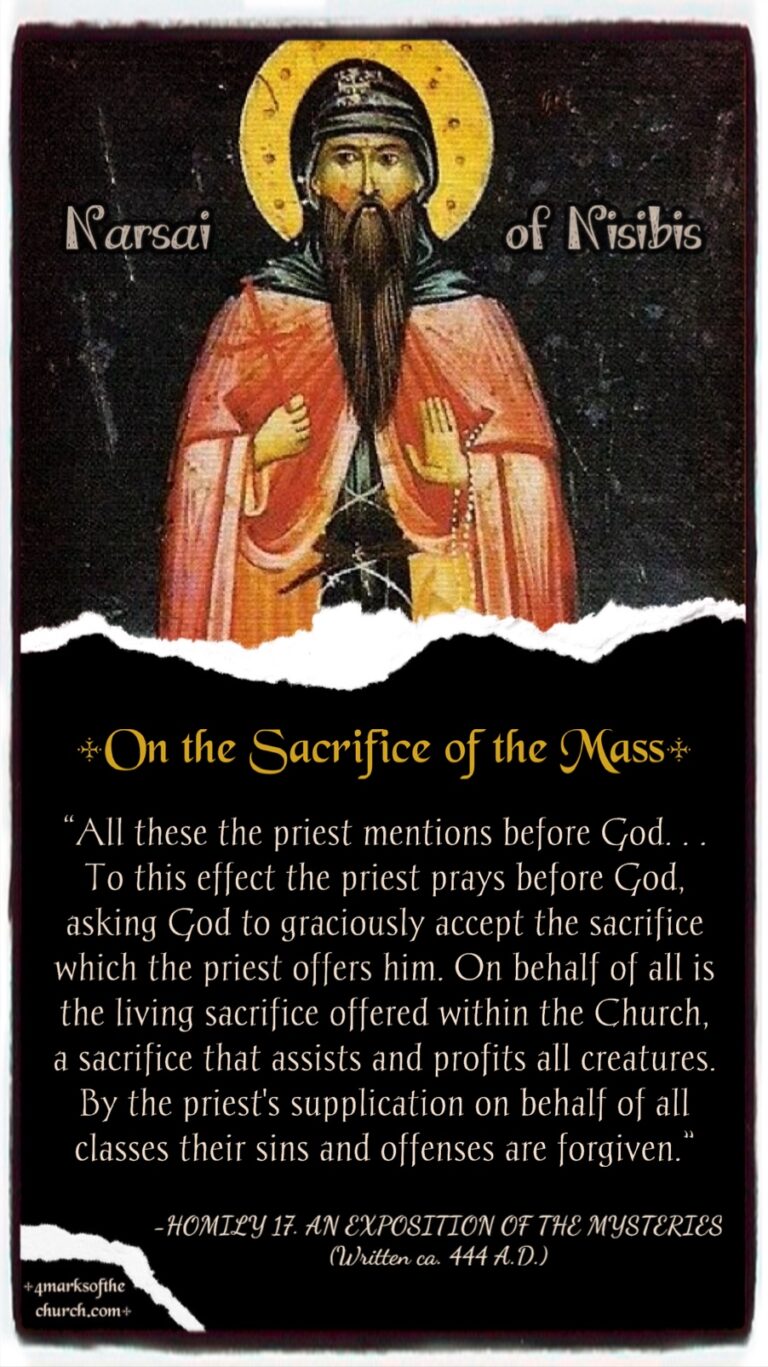
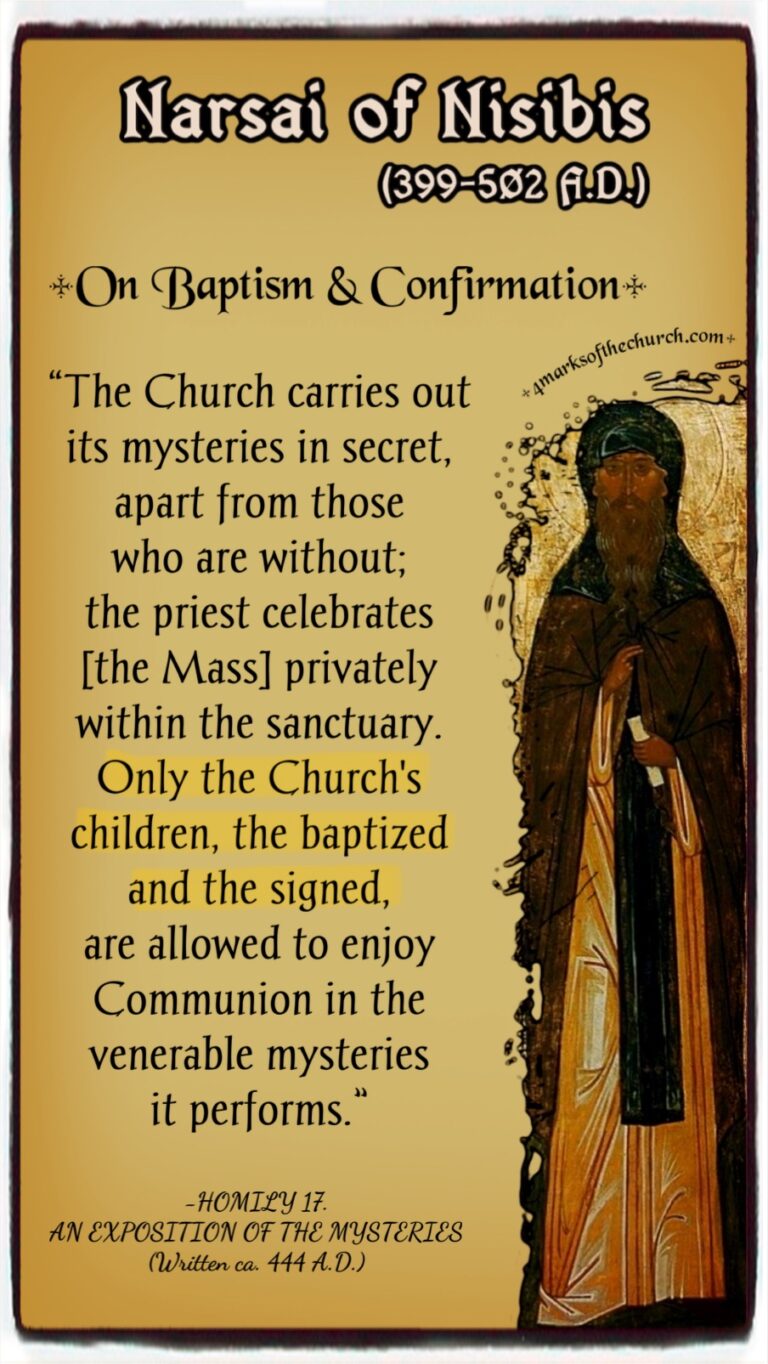
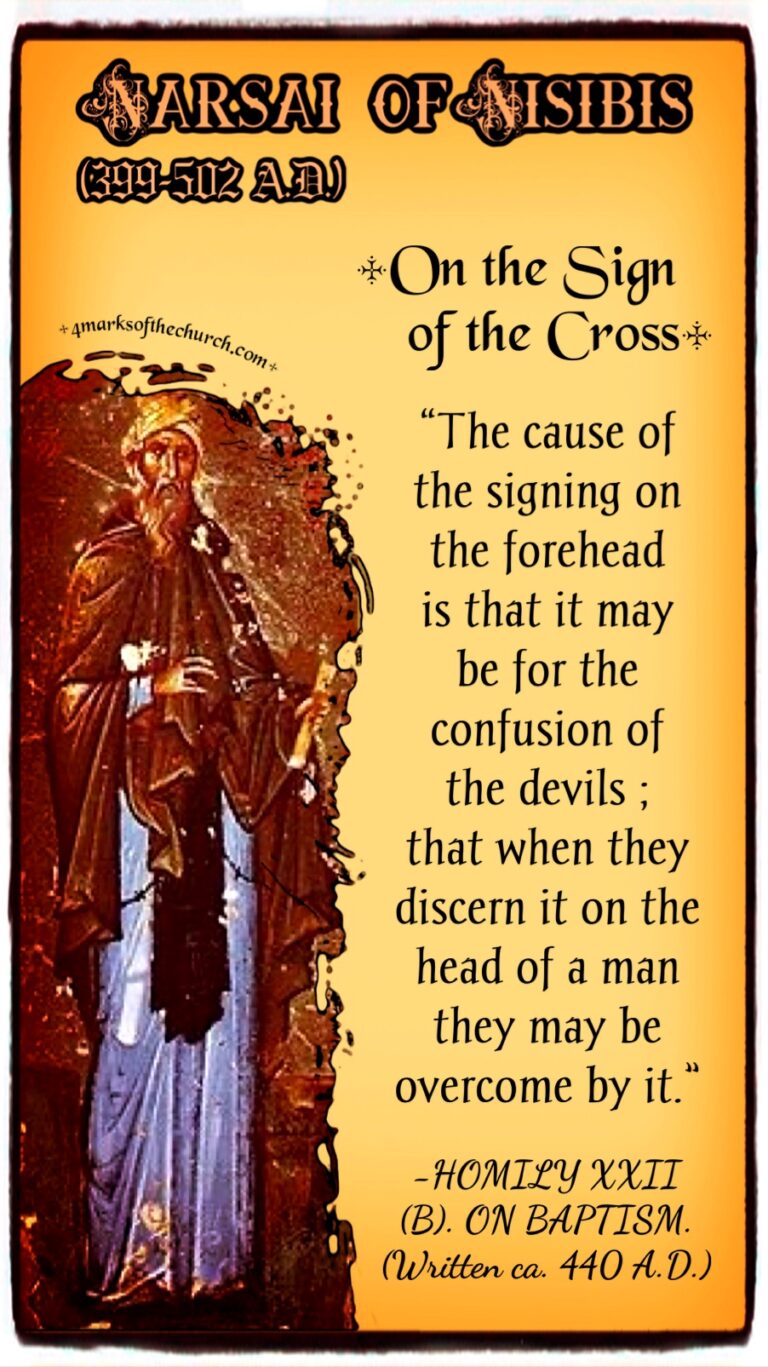
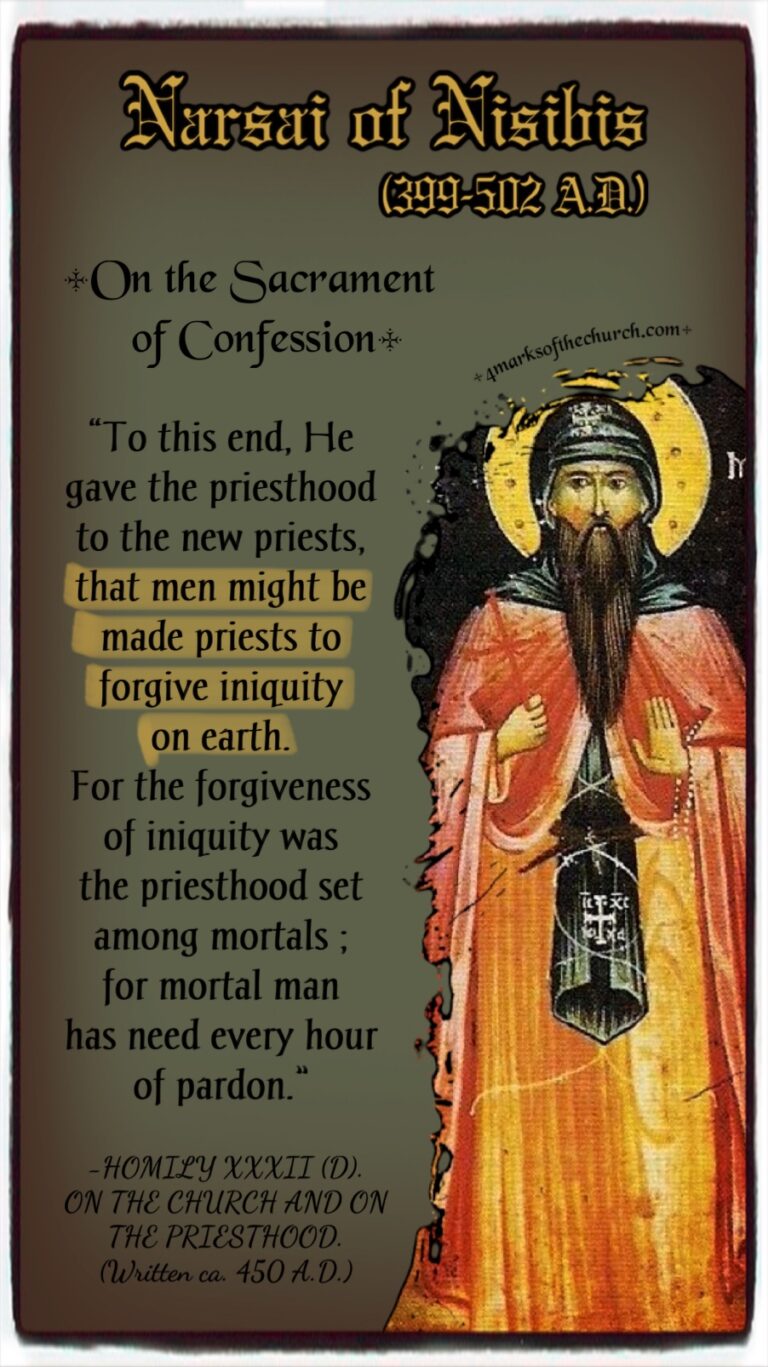
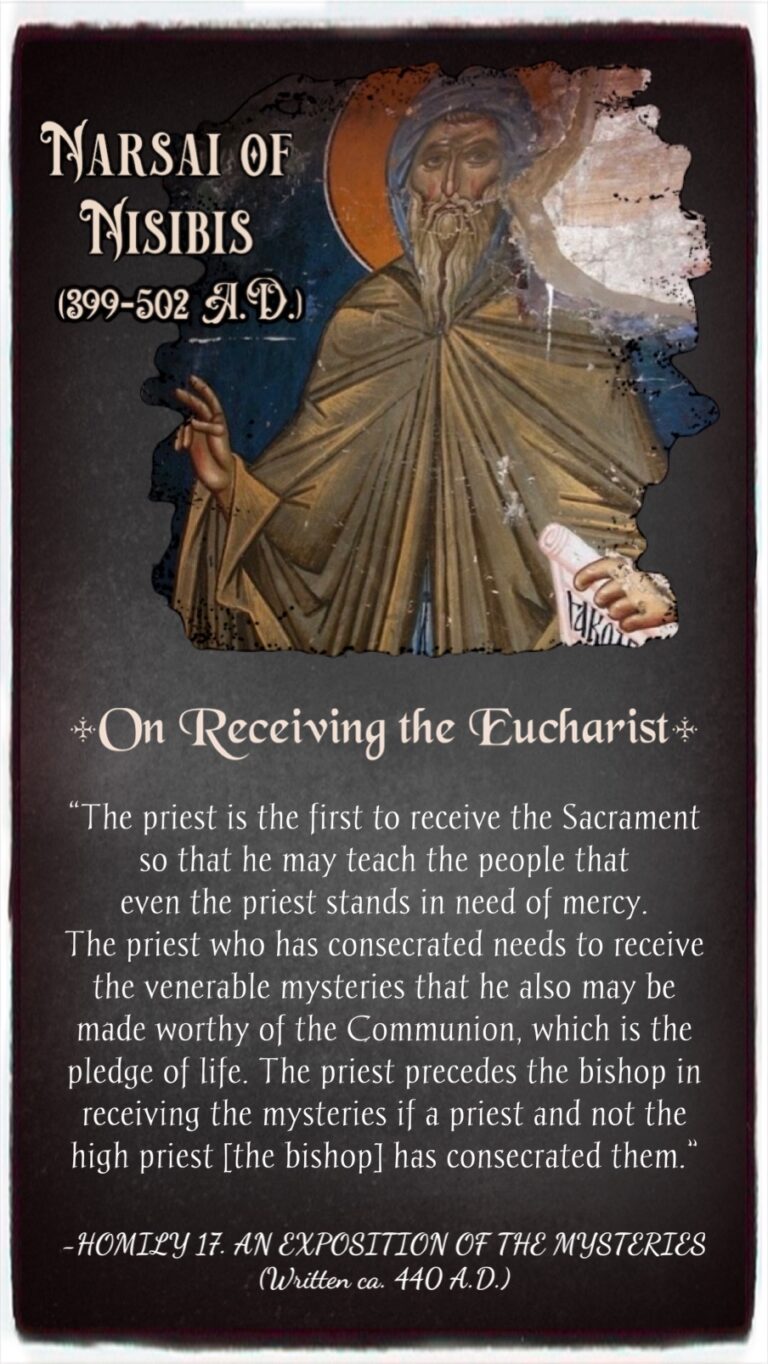
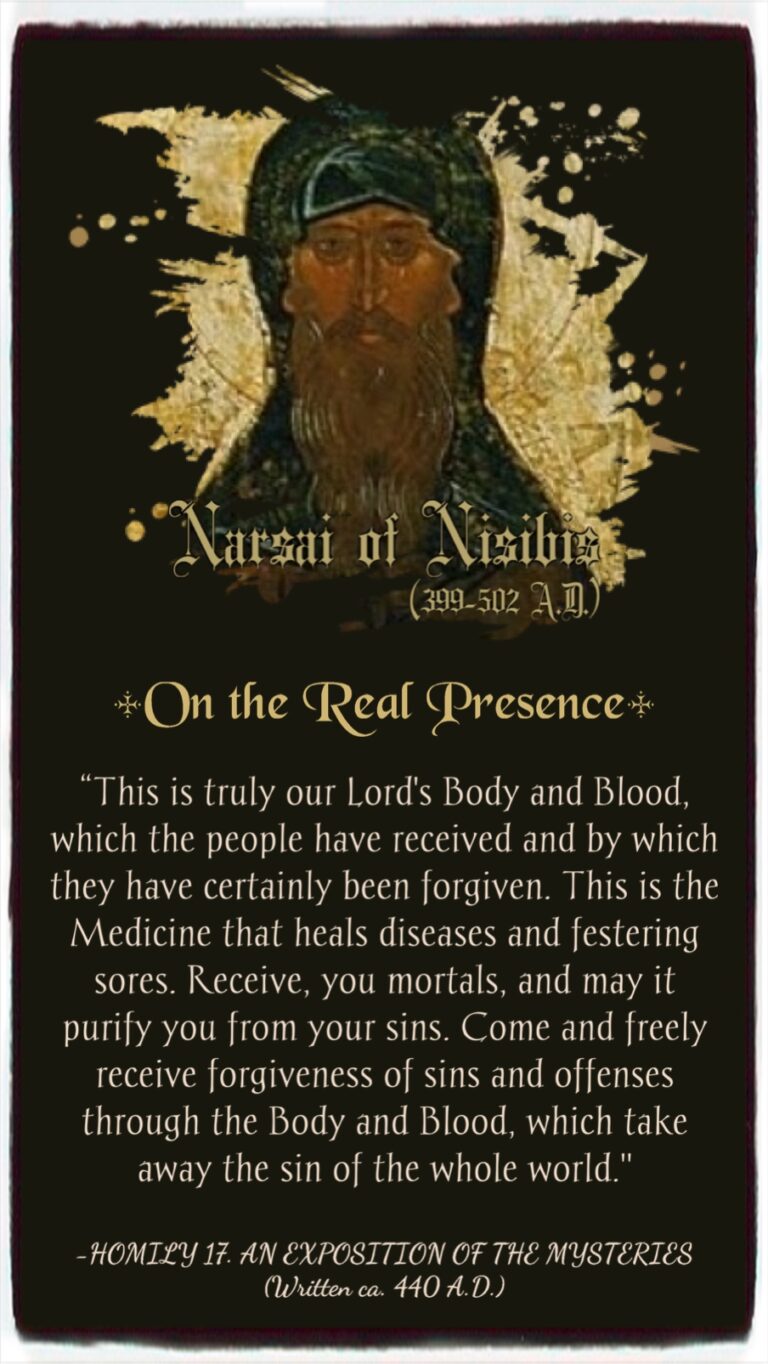
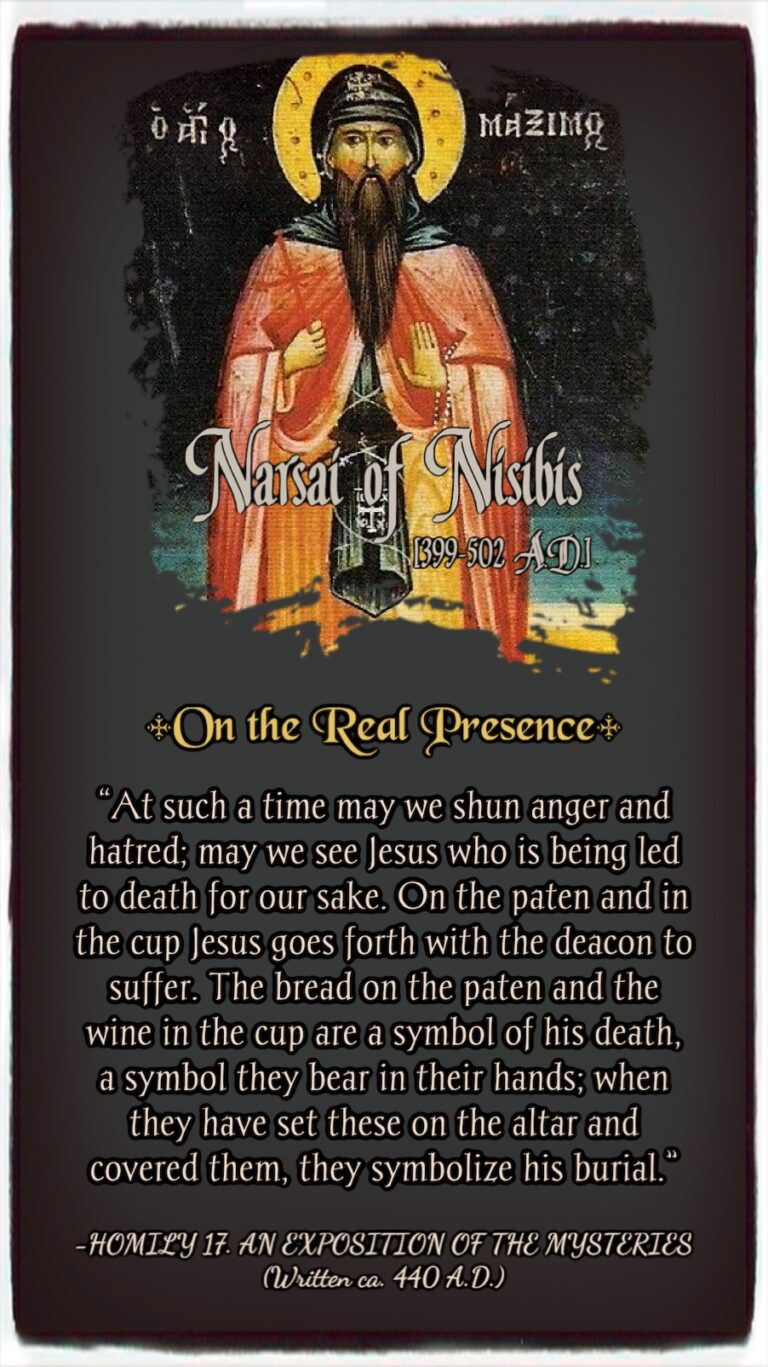

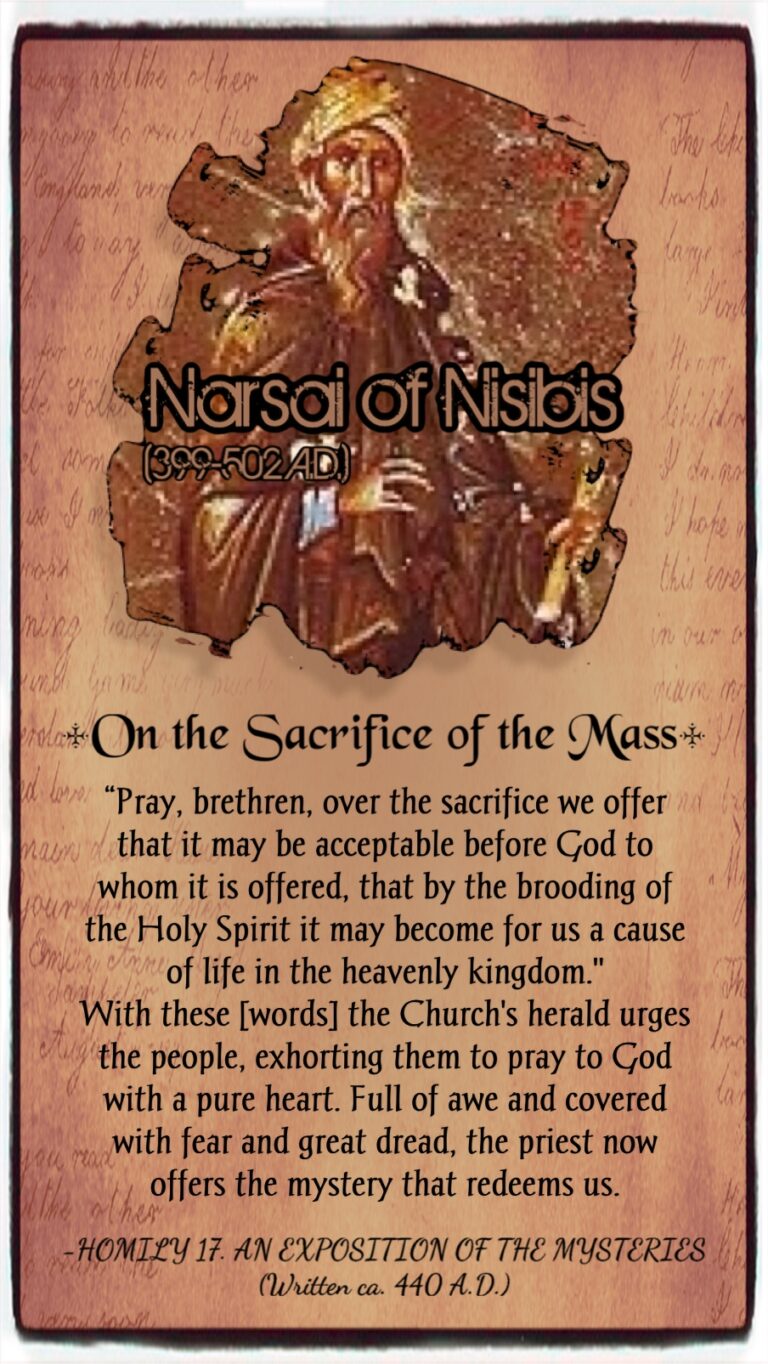






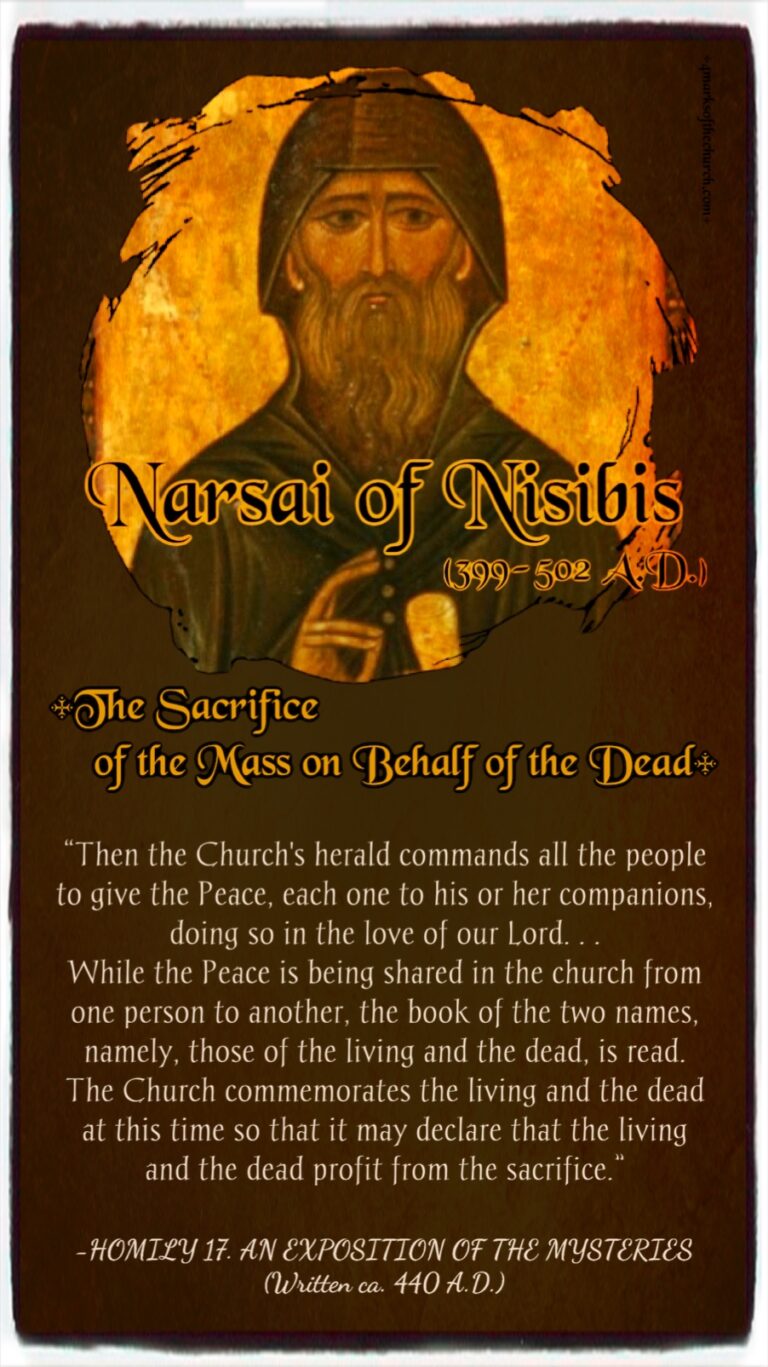
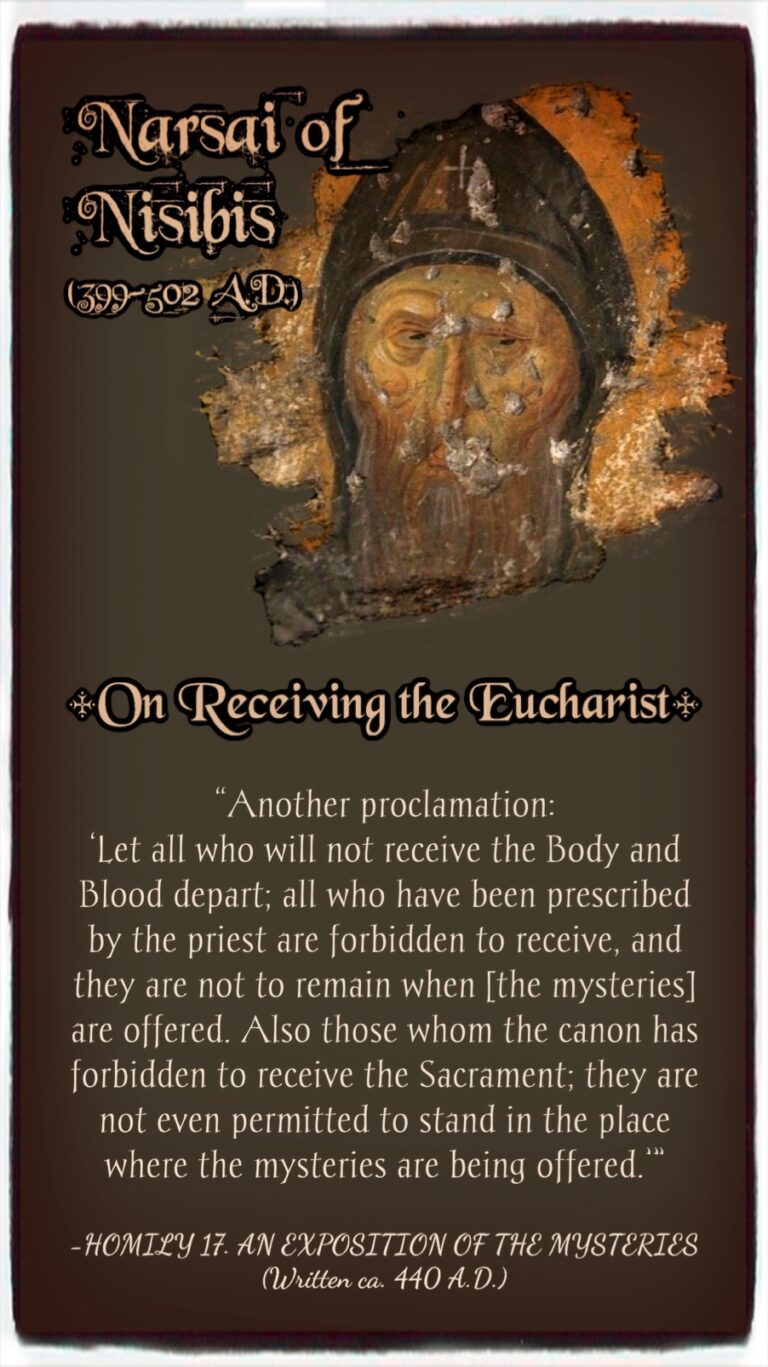
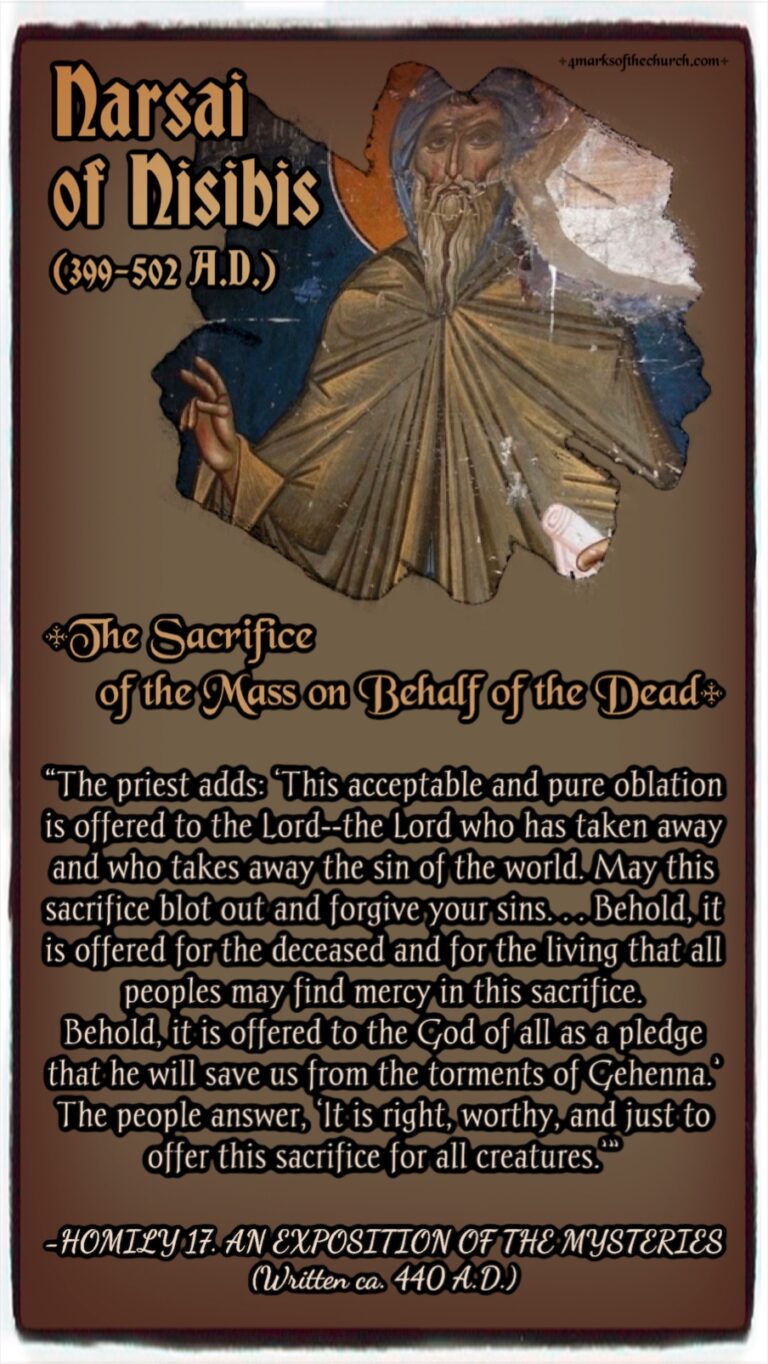

Narsai of Nisibis (399-502), often referred to simply as Narsai, was one of the foremost of Assyrian/Syriac poet-theologians, perhaps equal in stature to Jacob of Serugh, both second only to Mar Aprem of Nisibis. He is the most important writer of the East Syriac Christianity after Mar Aprem. Narsai is highly venerated in the Churches that descend from the Church of the East which are the Chaldean Catholic Church, the Assyrian Church of the East, the Ancient Church of the East and the Syro-Malabar Church, in which he is known as the ‘Flute of the Holy Spirit’. Although many of his works are likely lost, around eighty of his mêmrê (ܡܐܡܖ̈ܐ), or verse homilies are extant.
Works in modern translation:
- Six memre on creation — Narsaï (1968). Philippe Guignoux (ed.). Homélies de Narsaï sur la création: Édition critique du texte syriaque. Patrologia Orientalis 34, fasc. 3–4 (in French). Turnhout/Paris: Brepols.
- Four memre on baptism and eucharist — Narsai (1909). Richard Hugh Connolly (ed.). The liturgical homilies of Narsai. Texts and studies (Cambridge, England) vol. 8, no. 1. Cambridge University Press..
- Five memre on dominical feasts — Christmas, Epiphany, Passion, Easter, Ascension — these show Narsai’s christological opposition to Cyril of Alexandria in a few places — Narsai (1979). Frederick G McLeod (ed.). Narsai’s metrical homilies on the Nativity, Epiphany, Passion, Resurrection, and Ascension: critical edition of Syrica text. Patrologia Orientalis 40, fasc. 1. François Graffin. Turnhout: Brepols.
- Six memre on Old Testament topics — Enoch and Elijah, Flood, Blessings of Noah, Tower of Babel, Tabernacle, Brazen Serpent — J Frishmann (1992). “Narsai’s Memre on Old testament Topics”. University of Leiden (dissertation).
- Five memre on Parables of Jesus — Ten Virgins, Prodigal Son, Rich man and Lazarus, Workers in the Vineyard, Wheat and Tares — Narsaï (1984). Emmanuel Pataq Siman (ed.). Cinq homélies sur les paraboles évangéliques (in French). Paris: Cariscript.
- Memra on the Three Doctors (Diodore of Tarsus, Nestorius and Theodore of Mopsuestia) — Martin, F (1900). “Homélie de Narsaï sur les trois Docteurs”. Journal Asiatique. 15: 469–525.
Writings:
- mêmrê (ܡܐܡܖ̈ܐ) or “verse homilies”
- Homily 17: Exposition of the Mysteries
- Homily 21: On the Mysteries of the Church and on Baptism
- Homily 22: On Baptism
- Homily 32: On the Church and on the Priesthood
Quotes and Excerpts:
THE LITURGICAL HOMILIES OF NARSAI
Translated into English with an introduction by
DOM R. H. CONNOLLY M.A. OF DOWNSIDE ABBEY
Texts and studies (Cambridge, England) vol. 8, no. 1. CAMBRIDGE AT THE UNIVERSITY PRESS 1909
141-A-1. HOMILY 17. AN EXPOSITION OF THE MYSTERIES
The Church carries out its mysteries in secret, apart from those who are without; the priest celebrates privately within the sanctuary. Only the Church’s children, the baptized and the signed, are allowed to enjoy
Communion in the venerable mysteries it performs.
Another proclamation:
“Let all who will not receive the Body and Blood depart; all who have been prescribed by the priest are forbidden to receive, and they are not to remain when [the mysteries] are offered. Also those whom the canon has forbidden to receive the Sacrament; they are not even permitted to stand in the place where the mysteries are being offered.
At such a time may we shun anger and hatred; may we see Jesus who is being led to death for our sake. On the paten and in the cup Jesus goes forth with the deacon to suffer. The bread on the paten and the wine in the cup are a symbol of his death, a symbol they bear in their hands; when they have set these on the altar and covered them, they symbolize his burial.
The priests now process into the sanctuary, standing there in great splendor and wearing beauteous adornment. The priest chosen to celebrate this sacrifice bears in himself the image of our Lord at this time. Our Lord was a mediator between us and his Father; in like fashion the priest is a mediator.
Then the priest blesses the people using the words the life-giving mouth prescribed: “Peace be with you” says the priest to the children of the Church, for peace is multiplied in Jesus our Lord who is our peace… The people answer the priest lovingly and say, “With you, O priest, and with your priestly spirit.”
. . . This shows that even the priest needs prayer, and it is necessary that the whole Church should intercede for him.
Then the Church’s herald commands all the people to give the Peace, each one to his or her companions, doing so in the love of our Lord….
While the Peace is being shared in the church from one person to another, the book of the two (sets of] names, namely, those of the living and the dead, is read. The Church commemorates the living and the dead at this time so that it may declare that the living and the dead profit from the sacrifice.
The priest first blesses the people. [.. ] “The grace,” he says,
“of Jesus our Lord and the love of the Father and the communion of the Holy Spirit be with us’-may the grace which our Lord has granted us by his coming give us confidence before his Majesty. May “the love of the Father, who sent us the Son, who is from him- open for us the door of mercy in the day of his coming. May the communion of the Holy Spirit, of which we have been made worthy, sanctify and purge us from the filth of our sins.’
The priest adds: “This acceptable and pure oblation is offered to the Lord–the Lord who has taken away and who takes away the sin of the world. May this sacrifice blot out and forgive your sins. . . Behold, it is offered for the deceased and for the living that all peoples may find mercy in this sacrifice.
Behold, it is offered to the God of all as a pledge that he will save us from the torments of Gehenna.”
The people answer, “It is right, worthy, and just to offer this sacrifice for all creatures.”
All the priests in the sanctuary bear the image of the apostles who gathered at the tomb. Undoubtedly the altar is the symbol of the Lord’s tomb; the bread and wine are the body of the Lord which was embalmed and buried. The veil covering them is a type of the stone sealed by the ring of the priests and the executioners. And the deacons, standing on both sides and brandishing [fans], symbolize the angels at the head and feet [of the tomb]. All the deacons who minister before the altar are like the angels who surrounded our Lord’s tomb.
“Pray, brethren,
over the sacrifice we offer that it may be acceptable before God to whom it is offered, that by the brooding of the Holy Spirit it may become for us a cause of life in the heavenly kingdom.”
With these [words] the Church’s herald urges the people, exhorting them to pray to God with a pure heart. Full of awe and covered with fear and great dread, the priest now offers the mystery that redeems us.
The priest begins to make earnest supplication before God, asking God in his love to graciously accept the living sacrifice that is being offered to him. He mentions the ecclesiastical orders, one after another, for whom the Church offers the venerable mysteries. First he commemorates the glorious Church that is in every place, asking that they [its members] may be of one mind and faith. He mentions the priests who are standing around and the deacons, entreating that they be made holy and pure. He recalls the martyrs, confessors, and doctors that they may be remembered in the Church during the mysteries. . . He also commemorates all the deceased who have departed in faith without doubting.
All these the priest mentions before God. [. .] To this effect the priest prays before God, asking God to graciously accept the sacrifice which the priest offers him. On behalf of all is the living sacrifice offered within the Church, a sacrifice that assists and profits all creatures. By the priest’s supplication on behalf of all classes their sins and offenses are forgiven.
After this the priest makes confession before God as our Lord Jesus taught his twelve. “Lo, we typify,” says the priest, “and commemorate the passion, death, and resurrection of our Lord Jesus.” He summons the Spirit to come down and dwell in the bread and wine, making them the Body and Blood of the royal Messiah. He calls upon the Spirit to light down upon the assembled congregation that by its gift its members may be worthy to receive the Body and Blood. The Spirit descends upon the oblation without change [of place] and causes the power of its Godhead to dwell in the bread and wine, completing the mystery of our Lord’s resurrection from the dead.
The Spirit comes down at the request of the priest- no matter how great a sinner the priest may be and celebrates the mysteries by the mediation of the priest whom the Spirit has consecrated. It is not the priest’s goodness that celebrates the venerable mysteries, but it is the Holy Spirit who does so by its brooding. The Spirit broods, not because of the worthiness of the priest but because of the mysteries that are set upon the altar.
Thus does the Holy Spirit celebrate by the hands of the priest; and without a priest they [the mysteries] are never celebrated. They are not celebrated without a priest, for the Holy Spirit has not permitted [any other] to celebrate them. The priest receives the power of the Spirit through the laying on of hands, and by him are performed all the Church’s mysteries.
Then the priest takes into his hands the living Bread and, looking up-ward, confesses his Lord. He breaks the Bread in the name of the Father and the Son and the Spirit, and, uniting the Blood with the Body, mentions the Trinity; with the same words he signs the Body with the living Blood. He unites them–the Body with the Blood and the Blood with the Body -so that all may confess that the Body and the Blood are one. . . He now begins to break the Body little by little that it may be easy to distribute to all who receive it.
This is truly our Lord’s Body and Blood, which the people have received and by which they have certainly been forgiven. This is the Medicine that heals diseases and festering sores. Receive, you mortals, and may it purify you from your sins. Come and freely receive forgiveness of sins and offenses through the Body and Blood, which take away the sin of the whole world.”
The priest is the first to receive the Sacrament so that he may teach the people that even the priest stands in need of mercy. The priest who has consecrated needs to receive the venerable mysteries that he also may be made worthy of the Communion, which is the pledge of life. The priest precedes the bishop in receiving the mysteries if a priest and not the high priest [the bishop] has consecrated them.
If I should seek to write anything at all concerning this, all the parchments in this [world] would not suffice. Flesh, moreover, is fitting for the perfect and the full-grown; milk is for children till they reach maturity. “Whoever eats my flesh abides in me and I in him,” provided my commandments are diligently obeyed. For “whoever eats my Body and drinks my Blood unworthily eats and drinks unto condemnation,’
Those who approach to receive the Body stretch forth their hands, lifting up their right hand and placing it over its companion. Each person receiving joins his or her hands in the form of a cross and thus receives the Body of our Lord upon a cross. . . With this type the person who receives approaches [and] receives.
And the priest who distributes says,
“The Body of our Lord.”
The communicants receive in their hands the venerable Body of the Lord of all.
HOMILY XXII (B). ON BAPTISM.
“The cause of the signing on the forehead is that it may be for the confusion of the devils ; that when they discern it on the head of a man they may be overcome by it.”
HOMILY XXI (C).
ON THE MYSTERIES OF THE CHURCH AND ON BAPTISM.
The priests of the Church have grasped authority in the height and the depth; and they give commands to heavenly and earthly beings. They stand as mediators between God and man, and with their words they drive out iniquity from mankind. The key of the divine mercies is placed in their hands, and according to their pleasure they distribute life to men. The hidden Power has strengthened them to perform this, that by things manifest they may shew His love to the work of His hands. He shewed His love by the mystery which He delivered to them of earth, that men to men might be shewing mercy by His gift. The power of His gift He delivered into the hand of the priests of the Church, that by it they might strengthen the feebleness of men who were in debt by sin.”
“The defilement of men he cleanses with water : yet not by the water, but by the power of the name of the Divinity which there lights down. The power of the Divinity dwells in the visible waters, and by the force of His power they dissolve the might of the Evil One and of Death. The Evil One and Death are undone by Baptism; and the resurrection of the body and the redemption of the soul are preached there in.”
HOMILY XXXII (D).
ON THE CHURCH AND ON THE PRIESTHOOD.
“To this end He gave the priesthood to the new priests, that men might be made priests to forgive iniquity on earth. For the forgiveness of iniquity was the priesthood (set) among mortals ; for mortal man has need every hour of pardon.”
“The greatness of the title and the order of the priesthood I desired to praise ; and anguish goaded me when I saw how it has been degraded by ignorance. I wondered to see the greatness of the glory of those who triumphed; and I was pained and grieved at the disgrace of those who played the coward. By how much their office was greater than all orders, even so is it become immeasurably less than all grades. The treasury of the Spirit He delivered to them to administer, and fools who have not known how to discern the power of its greatness have despised it. The hidden nod gave into their hands the keys of the height ; and wicked priests have shut the door before those that would have entered in. It was granted to them to pardon the iniquity of men; and the iniquity of them that should
have given pardon has surpassed that of the defiled.”
return to top ⇑